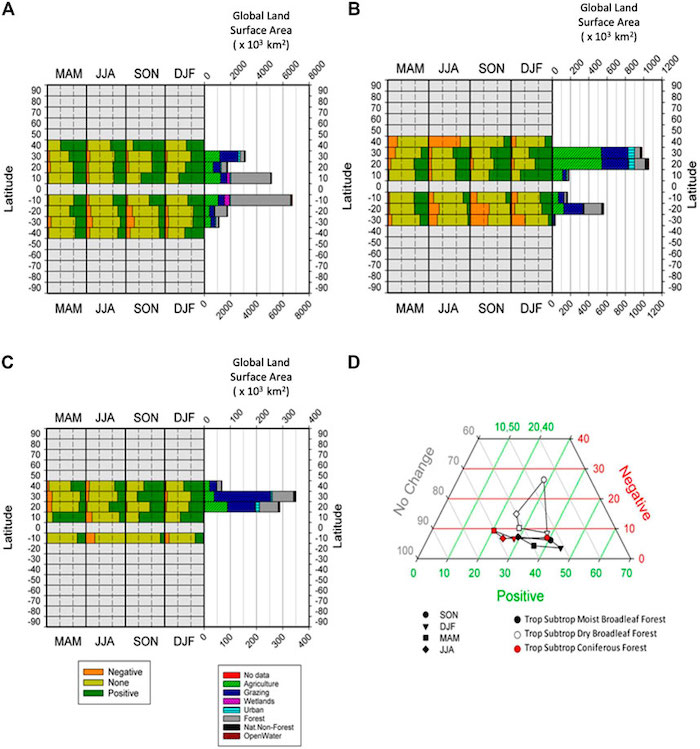
SOUTHWORTH, RYAN, HERRERO, KHATAMI, BUNTING, HASSAN, MUIR, WAYLEN – Latitudes and land use: Global biome shifts in vegetation persistence across three decades
Jane Southworth, Sadie J. Ryan, Hannah V. Herrero, Reza Khatami, Erin L. Bunting, Mehedy Hassan, Carly S. Muir, Peter Waylen
Article first published online: 18 January 2023
DOI: https://doi.org/10.3389/frsen.2023.1063188
ABSTRACT: The dynamics of terrestrial vegetation are shifting globally due to environmental changes, with potential repercussions for the proper functioning of the Earth system. However, the response of global vegetation, and the variability of the responses to their changing environment, is highly variable. In addition, the study of such changes and the methods used to monitor them, have in of themselves, been found to significantly impact the findings. This research builds on a recently developed vegetation persistence metric, which is simple to use, is user-controlled to assess levels of statistical significance, and is readily reproducible, all designed to avoid these potential pitfalls. This study uses this vegetation persistence metric to present a global exploration of vegetation responses to climatic, latitudinal, and land-use changes at a biomes level across three decades (1982–2010) of seasonal vegetation activity via the Normalized Difference Vegetation Index (NDVI). Results demonstrated that positive vegetation persistence was found to be greater in June, July, August (JJA), and September, October, November (SON), with an increasing vegetation persistence found in the Northern Hemisphere (NH) over the Southern Hemisphere (SH). While vegetation showed positive persistence overall, this was not constant across all studied biomes. Overall forested biomes along with mangroves showed positive responses towards enhanced vegetation persistence in both the northern hemisphere and southern hemisphere. Contrastingly, desert, xeric shrubs, and savannas exhibited no significant persistence patterns, but the grassland biomes showed more negative persistence patterns and much higher variability over seasons, compared to the other biomes. The main drivers of changes appear to relate to climate, with tropical biomes linking to the availability of seasonal moisture, whereas the northern hemisphere forested biomes are driven more by temperature. Grasslands respond to moisture also, with high precipitation seasonality driving the persistence patterns. Land-use change also affected biomes and their responses, with many biomes having been significantly impacted by humans such that the vegetation response matched land use and not biome type. The use here of a novel statistical time series analysis of NDVI at a pixel level, and looking historically back in time, highlights the utility and power of such techniques within global change studies. Overall, the findings match greening trends of other research but within a finer scale both temporally and spatially which is a critical new development in understanding global vegetation shifts.
Read the full publication in Frontiers in Remote Sensing.